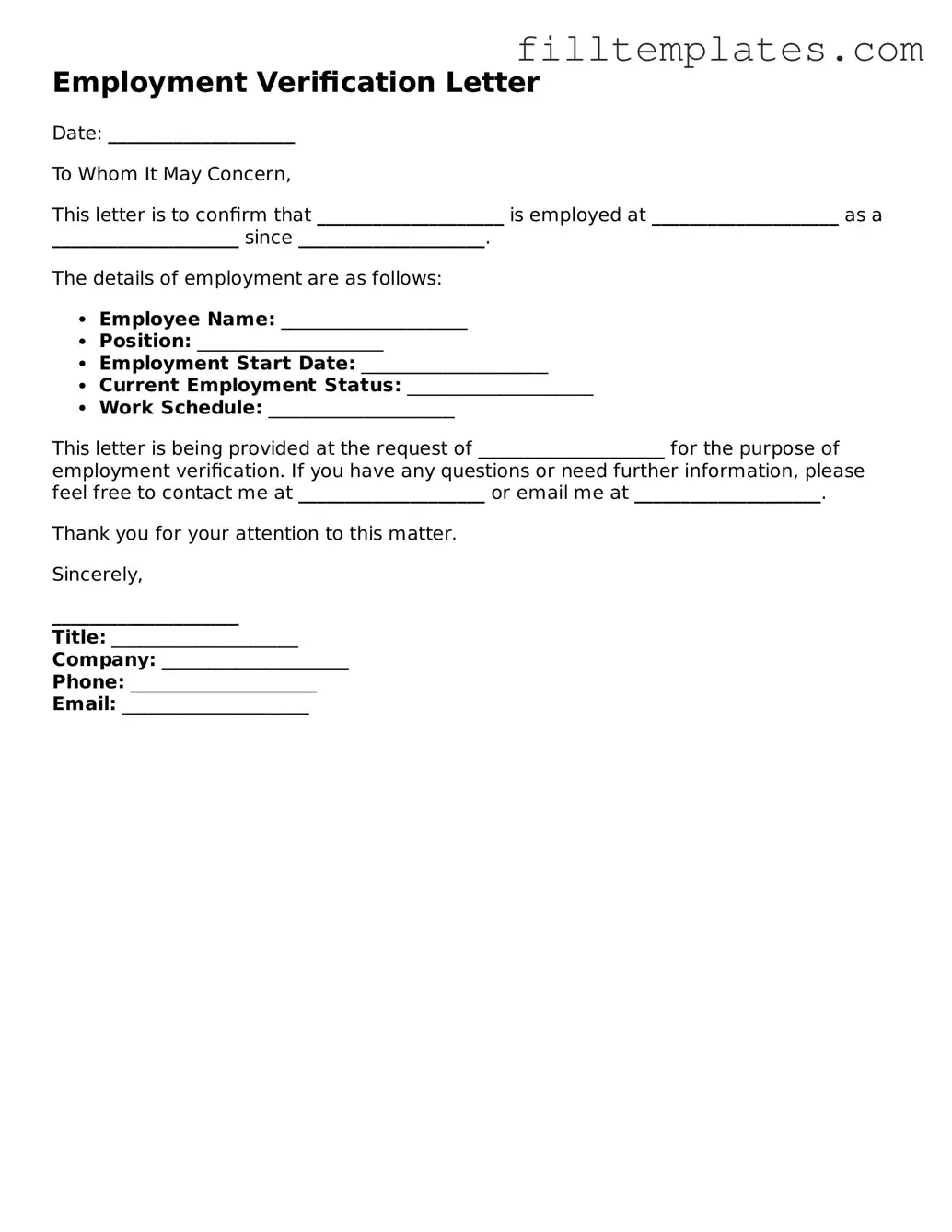Free Employment Verification Template
The Employment Verification form is a document used to confirm an individual's employment status, job title, and salary details. Employers often request this form to ensure that a candidate has the necessary work history for a position. It serves as a crucial tool in the hiring process, providing transparency and building trust between potential employers and employees.
Open Employment Verification Editor
